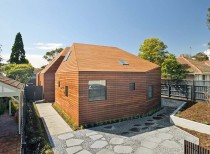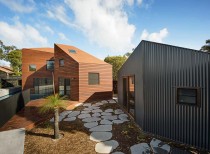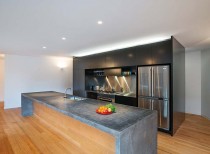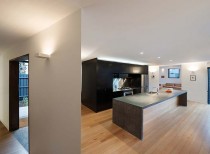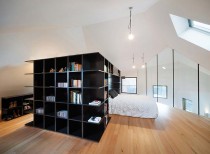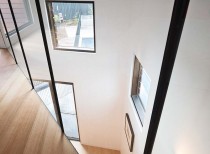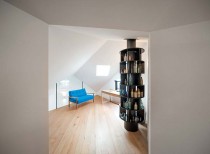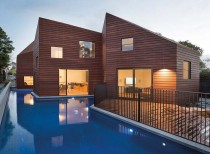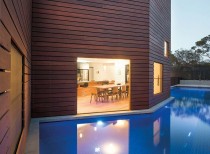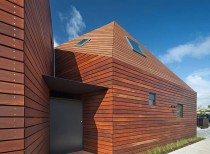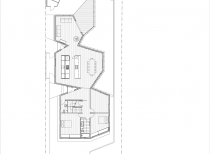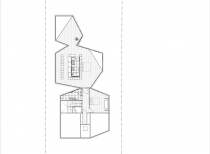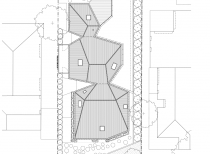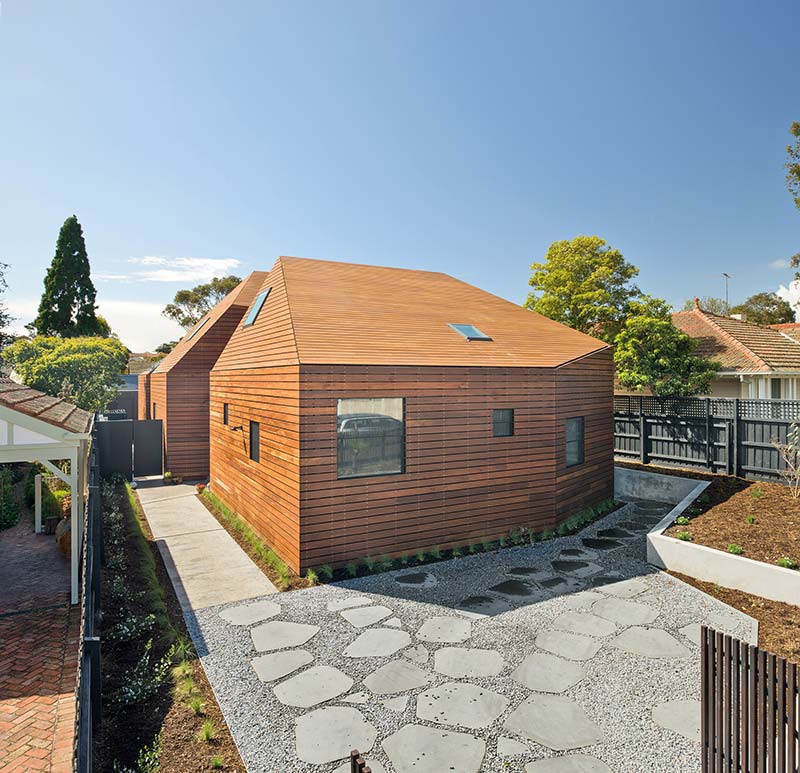
Architect’s Statement: We saw the Hampton House as an interesting opportunity to explore the constraints of a typical north – south subdivision in an established conventional suburban context.
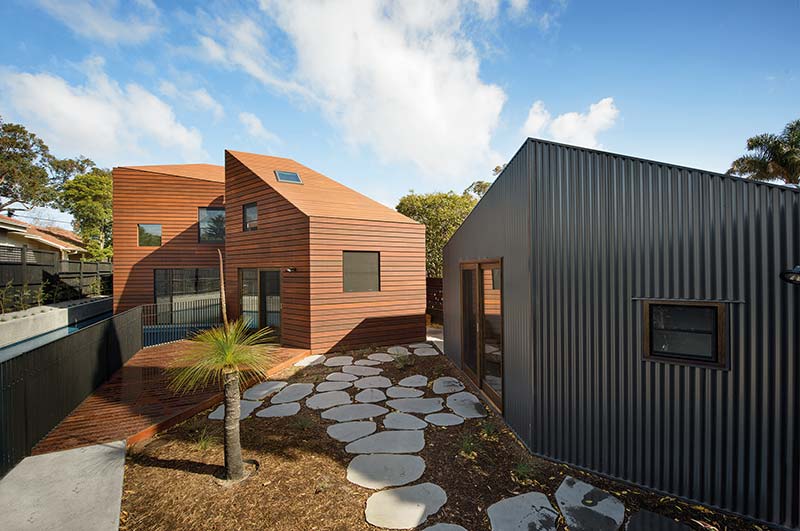
Part of this exploration was to consider the (often overlooked) residue side spaces between houses as a valuable spatial commodity that could enhance both internal amenity and program (space/light/swimming/services) and provide a more formally engaging interface between neighbours.
The house responds to the surrounding neighbourhood character in a considered way through its own unique topography which is a positive manipulation of the prescriptive setback guidelines of the City of Bayside. In its streetscape context the new house recalls the old demolished bungalow, appearing single storey in form, its folded hips and ridgelines sitting comfortably alongside its neighbours.
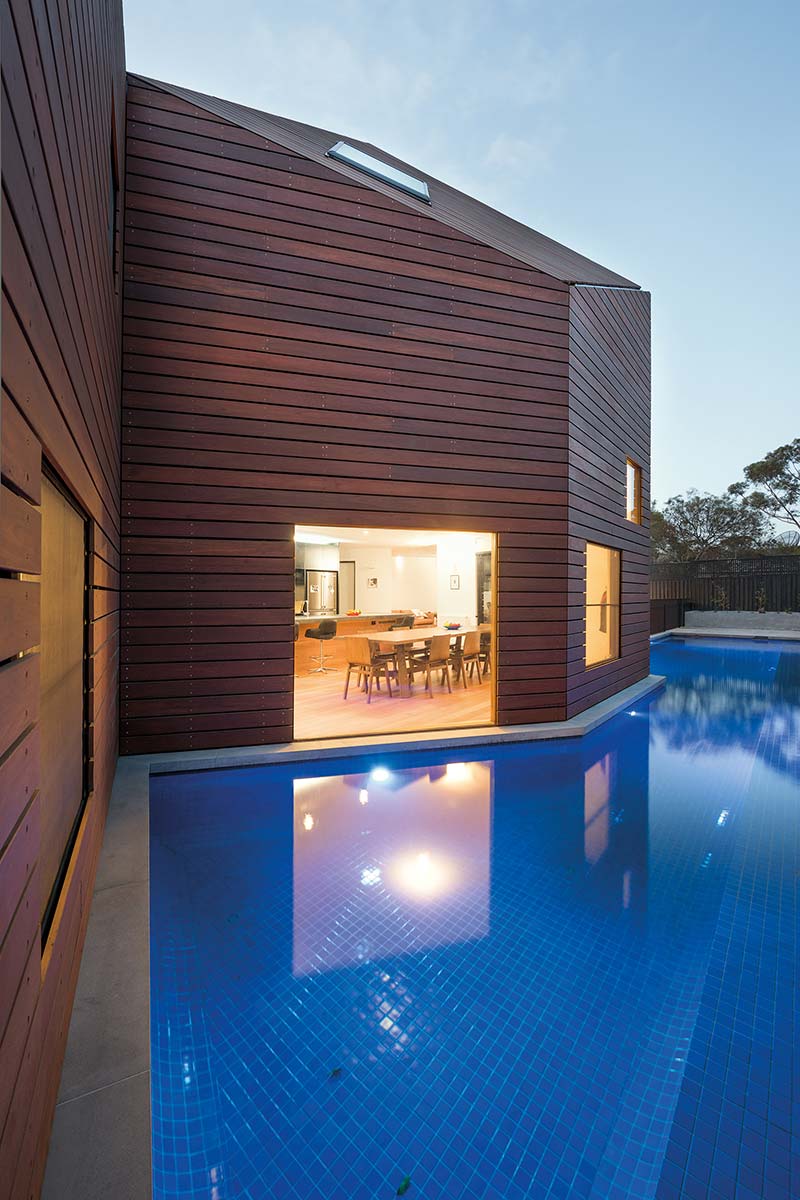
The house wants to engage with its location in a positive way, it is not an object that is defiant of its location. It is both sculptural and contextual and challenges the perception that suggests these attributes need to be mutually exclusive.
The program proposed four bedrooms with a fifth universal space (theatre/spare bedroom). The arrangement of the program acknowledges this prospect enabling a sense of separation and independence while providing a kitchen dining hub that is the social heart of the house and an adjunct lounge.
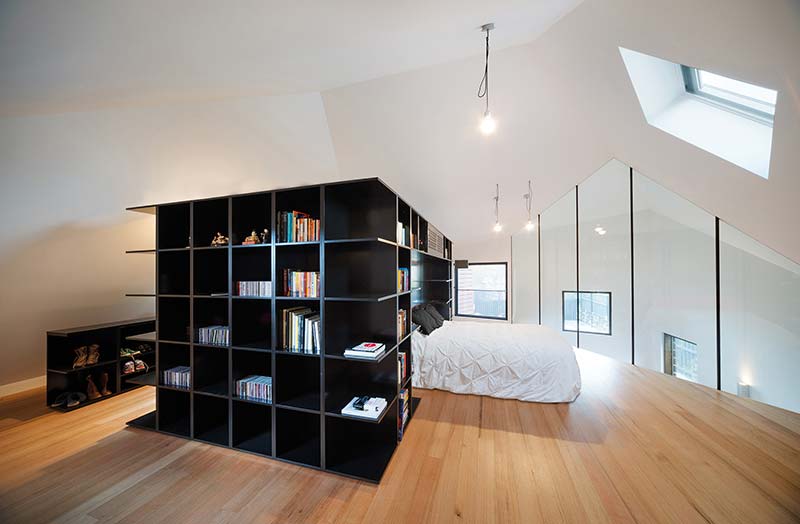
A coupling of different spaces occur at points of contraction between the three identifiable forms, compartmentalising areas for retreat but remaining visually connected as part of a greater spatial entity (through voids and folds in the wall and ceiling planes). The interior literally follows the external form and there is no lost roof area as the entire envelope is spatially maximised for both program and spatial affect.
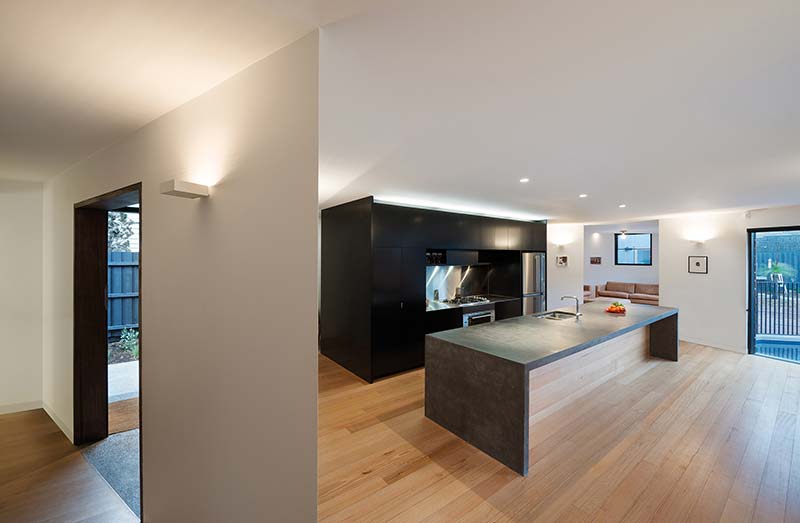
A back shed/lounge and bathroom emerged later as a further request for space and programmatic diversity. An important consideration for the house was its choice of material and a rainscreen of timber (spotted gum) was proposed as a way of providing a coherent abstract identity that emphasised the house’s complex sculptural topography – a seamless cluster of three interconnected forms.
Project Details:
Location: Victoria, Australia
Type: Residential – Houses
Area: 350m2
Architects: Jackson Clements Burrows Pty Ltd Architects
Team: Tim Jackson, Jon Clements, Graham Burrows, Andrew Bos, Rob Kennon
Photographs: John Gollings

